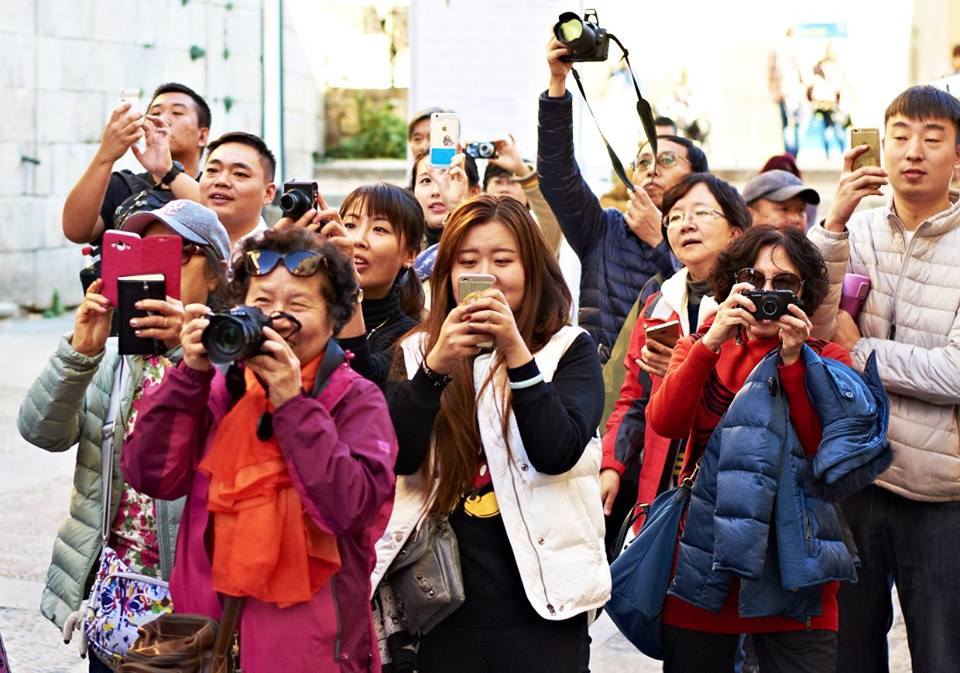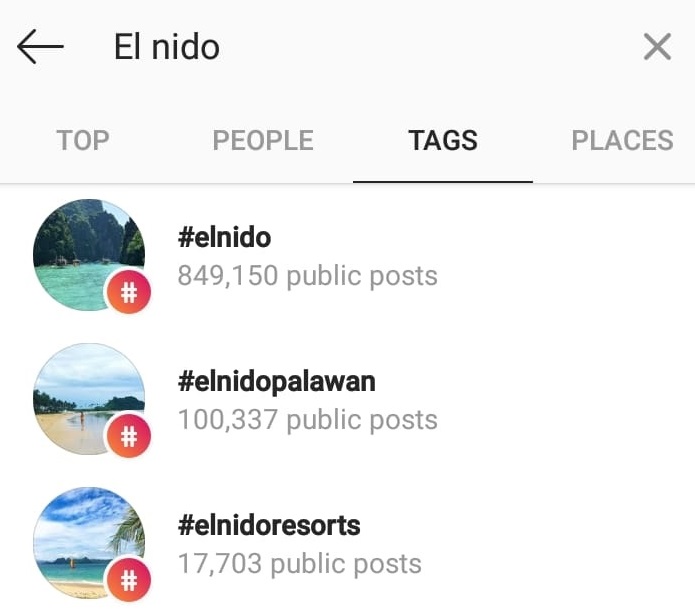Selfie Culture in the Philippines – Part 2 The Impacts of Selfie Tourism
In our first article Selfie Culture in the Philippines Part 1, we looked at how the Philippines came to be labelled ‘Selfie Capital of the World’. We also looked at the rise of ‘Selfie Tourism’, according to academics.
Selfies have become normalized. Even the most shy of nationalities, thinks nothing of whipping out their phone to capture themselves, in a moment, in public. Filipino’s probably continue to lead on the Selfie trend.
The rise of Photo-worthy Travel
Selfie Tourism may be looked down on by ‘serious’ travellers but it is increasingly influencing where we visit. Whether it is as simple as visiting a new bar or restaurant, or as significant as booking our annual vacation.
In the past, holiday destinations would become popular after being featured in Travel Books, Magazines or in TV Travel Shows. The 1960’s saw the first Package Holidays being offered, due to lower airfares, and the beginning of the Golden Age of Travel, especially across Europe [1. Travelling in the 60’s].
This was a time when the ability to travel widely became more affordable for many. On their return, travellers would wait excitedly for their photos, slides or films to come back from the processors. Which would take weeks! After sorting through them all, to remove the blurry photos, friends and family would be invited round to watch a slide show, or a cine film, of the holiday.
Whilst this ritual became a bit of a joke years later (“Oh No! Ma. Theresa has invited us round to watch her slideshow of Bohol again”), it did encourage more people to travel.

Travel was influenced by the media, word of mouth and great personal holiday photos. Certainly, photos of friends, colleagues and families somewhere exotic encouraged others to travel themselves, and to capture the same or similar images on film.
In fact, Fuiji Film capitalized on this trend, in the 60’s, with the marketing slogan “If it’s not on Fuiji you weren’t there” (or similar wording). We could argue that the impact of this Ad Campaign, certainly across Asia, can still be felt today. And that it has eventually led to the rise of Selfie Tourism and Social Media Pilgrimage.
Fifty years later we will still see hoards of Koreans, Chinese, Japanese and Taiwanese tourists all taking photos at the exact same spots. Evidence a place has been visited, or a photographic checklist to complete, as part of the holiday. A pilgrimage to the same locations visited by grandparents, parents, cousins or family friends.

Of course, instead of waiting until they get home, people are now able to share their snaps instantly on a whole host of Social Media Sites. There is no waiting for our photos to come back from the lab!
The Rise of the Social Media Pilgrimage
We have always taken photos so we can look back on, and remember, our visit. We have always taken photos to capture moments of our life, which were significant. And yes, many of us have knowingly taken photos to show off to our friends and family; “look where I’ve been”.
Technological advances allow us to tag, label and share our photos and videos instantly, or even as the moment is taking place. More people, than ever before, can see our images or videos and be inspired (or annoyed) by them. Even people we have never met. Selfie’s and Social Media Platforms, combined with travel has plugged the online world in to Millions of people’s profiles, which almost appear as personal lifestyle, or travel media channels. Whether that was the intention of the user or not.
- Facebook – 350 Million photos are uploaded every day, at a rate of 4,000 photo uploads per second [2. Facebook by the Numbers 2018].
- Instagram – More than 40 Billion photos have been uploaded to Instagram so far [3. Instagram by the Number]
- Snapchat – More than 400 Million stories are created every day, with the average user creating more than 20 messages, or “snaps,” per day [4. Snapchat by the Numbers]
All of these channels, all of these images being uploaded every day, inevitably leads to an increase in Social Media Pilgrimages too.
People will visit the places they’ve seen photographed, or talked about, on Social Media, in order to ‘Wow’ their friends, be on-trend, or secure a similar ‘must have’ photo. It also leads to some people, intentionally seeking out a new location, site or destination, in order to be the first to feature it online. Often it is Influencers at the forefront of establishing new Social Media Pilgrimage sites.
The Rise of the Travel Influencer
Influencers, earn their living by featuring themselves, new products, new locations and new activities to their thousands of followers on their Social Media channels. They are selling a much envied, and admired, lifestyle in which they’re the Leading Lady or Man.
Their travel is thoroughly researched and planned, even if it looks like they just ‘rocked up’ somewhere and ‘discovered it’. They will spend days contacting possible partners for their ‘brand’ to keep the cost of their travel down. But they are only successful in this, if they have the right demographic of follower, which matches the market that hotels, bars or restaurants want to attract.
They will spend hours doing photo shoots. And the reality is that whilst their images inspire us to visit somewhere, even Influencers heavily vet, and edit their photos. Some even use pre-set, or pre-saved edit settings in their Apps, which can be applied like the filters available in Instagram [5. 10 Secrets Travel Influencers Don’t Want You to Know About Their “Perfect” Vacations].
We love this video from Travel Influencer Sorelle Amore, giving tips on how to take your own travel photos
The average person, uploading their photos to Instagram, Snapchat and Facebook is also contributing to the promotion of new locations, but on a smaller scale. Their posts also encourage more people to visit, and to travel even more widely than before. Even if it’s just friends and family.
But Travel Influencers, are most commonly behind the emergence of new ‘Social Media Pilgrimage’ sites. Usually because they are contacted by hotels, tour operators, bars and restaurants who are wanting their venue to be the next must-see, must-visit destination. Or because they have enough of a following that when they replicate a photo they’ve seen someone else post online, it gains far greater traction as a result of their ‘influence’.
Regardless, the photographic style used by them has almost certainly influenced how the average Joe Bloggs stages their own holiday snaps. Even if we’re not lugging around 5 hats, 10 pairs of sunglasses, hair clips and flowers, and vintage style satchels and luggage to better dress our photos.
Travel behaviours of the Selfie-Generation
The only real differences between us and the aspiring traveller of the 1960’s is that we have greater technology at our finger tips, and a more accessible World of far-flung places. The technology allows us access to thousands of Online profiles, accounts and images. We are experience-seekers rather than passive recipients.
As an example. 20-30 somethings are increasingly using the Search<Tags, Search<Top and Search<Places options in Instagram to actively seek out their next destination. They’re looking for images of locations that inspire them to travel there. They search through photos and images, to find a ‘wow’ destination or location, using Tags, Top or Places, pouring over the images of people who have travelled before them, saving their favorites to ‘Collections’ and forming their itinerary.

Marketing to a Selfie Culture
For Hotels and Tour Operators, it is not enough to rely purely on traditional ways of marketing. They need to be as active on Social Media, as they are on their other areas of marketing.
This means creating and regularly updating their Business Facebook Page but, more specifically, creating and regularly updating their Business Instagram Page. And investing their time in a Business Snapchat Account.
In our final article of the series, we will look at how to Market to the Selfie Generation.
Article Sources:-
- Traveling in the Sixties – The Telegraph
- Facebook by the Numbers 2018 – OmnicoreAgency.com
- Instagram by the Numbers 2018 – OmnicoreAgency.com
- Snapchat by the Numbers 2018 – OmnicoreAgency.com
- 10 Secrets Travel Influencers Don’t Want You to Know About Their “Perfect” Vacations – Cosmopolitan
Further Reading:-
- Top Travel Influencers – IZEA
- Top 37 Hidden Tourist Spots in the Philippines Travel Pros Rave About – Traveloka.com
- The 15 Most Instagramable Spots in Manila – Culture Trip
- 25 Most Instagram Worthy Spots in the Philippines – Skyscanner
- Best Parody Accounts – Shorty Awards





https://waterfallmagazine.com
Keep on writing, great job!